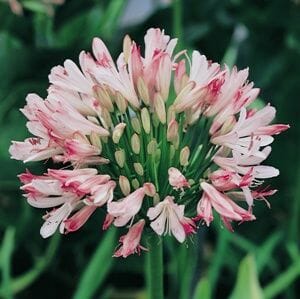Agapanthus Propagation: Tips for Expanding Your Plant Collection
Agapanthus Propagation: Tips for Expanding Your Plant Collection
Blog Article
Grasping the Art of Agapanthus Treatment: Important Actions for Healthy Growth and Dynamic Blooms
In the world of gardening, the cultivation of agapanthus stands as a fulfilling endeavor for those who seek to support these stylish flowering plants. From picking the best selection to understanding pruning techniques, the trip towards growing thriving agapanthus plants is complex and holds the crucial to unlocking the full potential of these agricultural treasures.

Selecting the Right Agapanthus Variety

When picking the ideal Agapanthus variety for your yard, consider elements such as environment suitability, blossom color, and growth routine. Agapanthus, typically understood as Lily of the Nile or African lily, is available in a range of shades varying from shades of purple and blue to white. Select a flower color that complements your existing yard scheme to develop a harmonious landscape. Additionally, take into consideration the climate in your area to guarantee the Agapanthus selection you choose can flourish in your certain problems. Some ranges are extra tolerant of cool temperature levels, while others choose warmer environments. Comprehending the growth practice of various Agapanthus selections is vital for proper placement within your yard. Some ranges have a clumping development behavior, suitable for borders or containers, while others have a more spreading nature, appropriate for ground cover or mass growings. By carefully examining these variables, you can choose the perfect Agapanthus range to boost the beauty of your yard.
Ideal Planting Conditions
Thinking about the ideal ecological demands is crucial for successful Agapanthus growing. Agapanthus plants are sensitive to cold temperature levels and should be secured from frost throughout winter season months.
To guarantee healthy development and vibrant flowers, plant Agapanthus bulbs at a depth of regarding 2-4 inches and space them 8-12 inches apart. Including raw material, such as compost, to the soil can improve water drainage and fertility, advertising robust root growth. Mulching around the base of the plants helps retain dampness and suppresses weed growth. Normal watering is critical, specifically throughout the expanding season, to keep the soil constantly damp but not soaked.
Watering and Fertilizing Tips
Maintaining correct wetness degrees and offering vital nutrients are crucial elements in the care routine for Agapanthus plants. When it pertains to sprinkling Agapanthus, it is crucial to strike an equilibrium. If overwatered, these plants prefer consistently damp soil yet are at risk to root rot. Throughout the expanding period, water deeply try this site as soon as a week, ensuring the soil is well-draining to stop waterlogging. In hotter environments or throughout durations of drought, more frequent watering may be essential to keep the soil equally moist. Nevertheless, lower watering in the wintertime to avoid water logged problems.
Fertilizing Agapanthus is vital for advertising healthy and balanced growth and respected blossoms. Apply a balanced fertilizer, such as a 10-10-10 formula, in the very early springtime as brand-new development arises. By following these watering and fertilizing ideas, you can ensure your Agapanthus plants thrive and create lively, lasting blossoms.
Pruning Methods for Agapanthus
Trimming Agapanthus plants at the suitable times and with appropriate strategies is important for keeping their wellness and promoting ideal development and flowering. The ideal time to trim Agapanthus is in late wintertime or very early springtime prior to brand-new development arises.
For flowered stems, wait up until the flowers have actually perished and after that trim them back to the base. This not just cleans the plant's look yet also urges the advancement of new flower buds. Deadheading spent blossoms can additionally redirect the plant's power into generating even more flowers instead of setting seeds. Nevertheless, if you want to gather seeds for breeding, leave some blossoms to fully grown and completely dry on the plant.
Bear in mind to utilize tidy, sharp tools to make precise cuts and reduce the risk of presenting illness. Agapanthus. Regular trimming will aid maintain your Agapanthus looking neat and healthy while guaranteeing a bountiful screen of beautiful blooms
Handling Common Bugs and Diseases
After making certain proper pruning strategies for Agapanthus, it is crucial to deal with common pests and diseases that can impact the health and wellness and vigor of these plants. One typical bug that impacts Agapanthus is the Agapanthus gall midget.
An additional typical issue is fungal leaf spot, which offers as dark lesions on the leaves. To avoid fungal diseases, guarantee good air flow around the plants, avoid above watering, and remove any contaminated leaves immediately. Furthermore, Agapanthus plants can deal with origin rot if they are planted in improperly draining pipes soil. To avoid this, plant Agapanthus in well-draining dirt and avoid overwatering. By being watchful and taking timely action versus diseases and insects, you can help your Agapanthus plants prosper and Get More Info produce vivid flowers.

Conclusion
To see here now conclude, mastering the art of agapanthus treatment entails picking the ideal range, giving ideal growing conditions, proper watering and feeding, appropriate pruning strategies, and dealing with typical parasites and conditions. By adhering to these important steps, you can make sure healthy development and dynamic blossoms for your agapanthus plants. Remember to on a regular basis keep track of and keep your plants to promote their overall wellness and long life.
To ensure healthy growth and lively flowers, plant Agapanthus light bulbs at a deepness of about 2-4 inches and area them 8-12 inches apart. By adhering to these watering and feeding suggestions, you can guarantee your Agapanthus plants prosper and create dynamic, lasting flowers.
One common bug that impacts Agapanthus is the Agapanthus gall midget. Furthermore, Agapanthus plants can suffer from origin rot if they are planted in improperly draining pipes soil. By complying with these vital steps, you can make certain healthy and balanced growth and vibrant flowers for your agapanthus plants.
Report this page